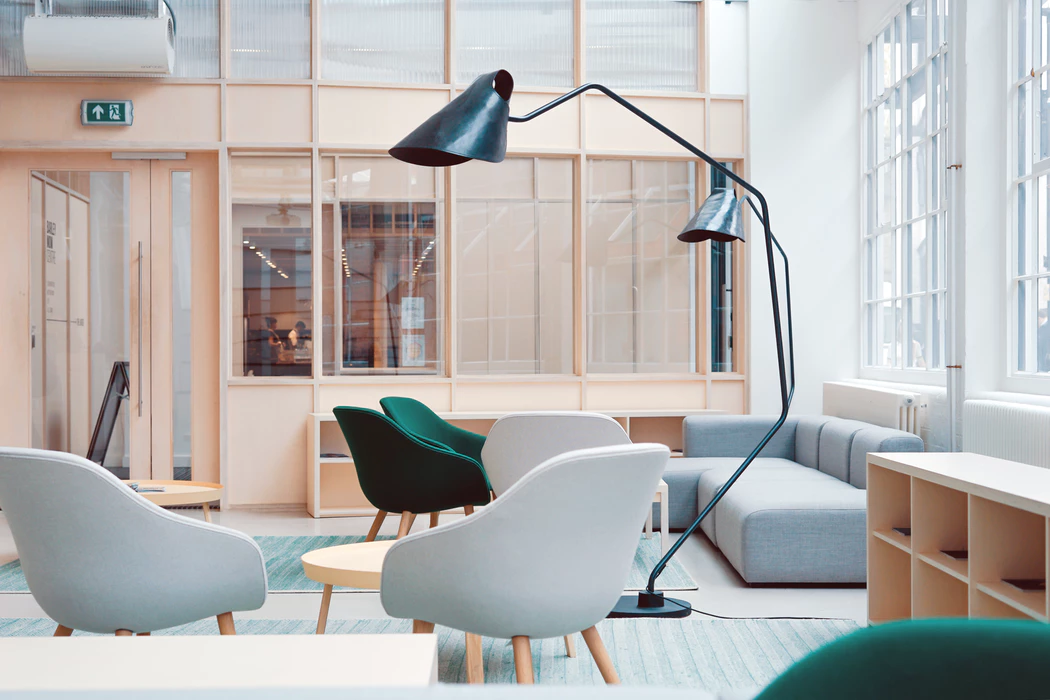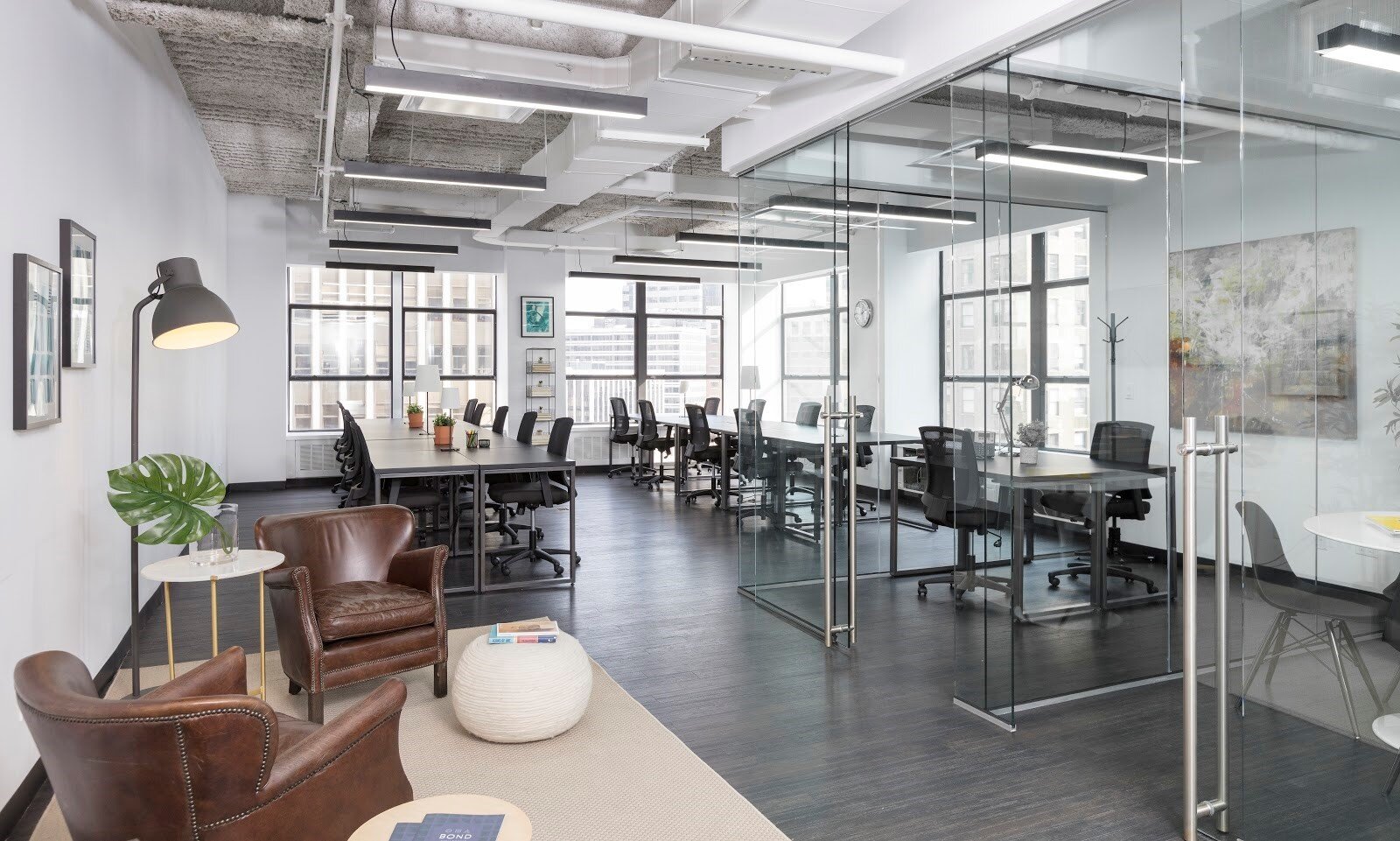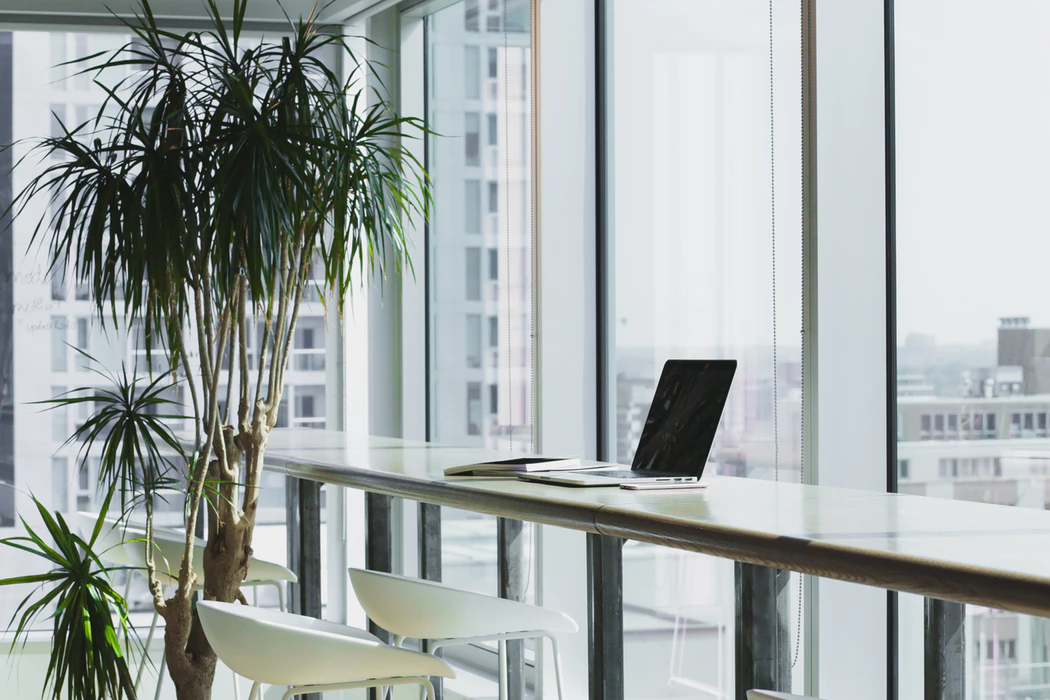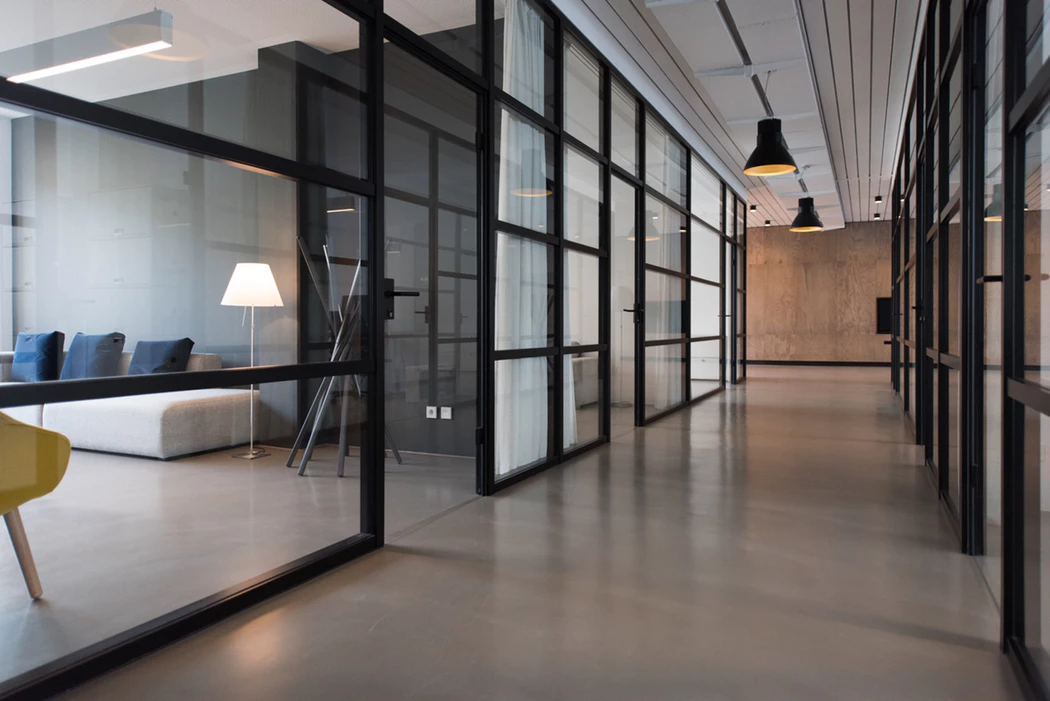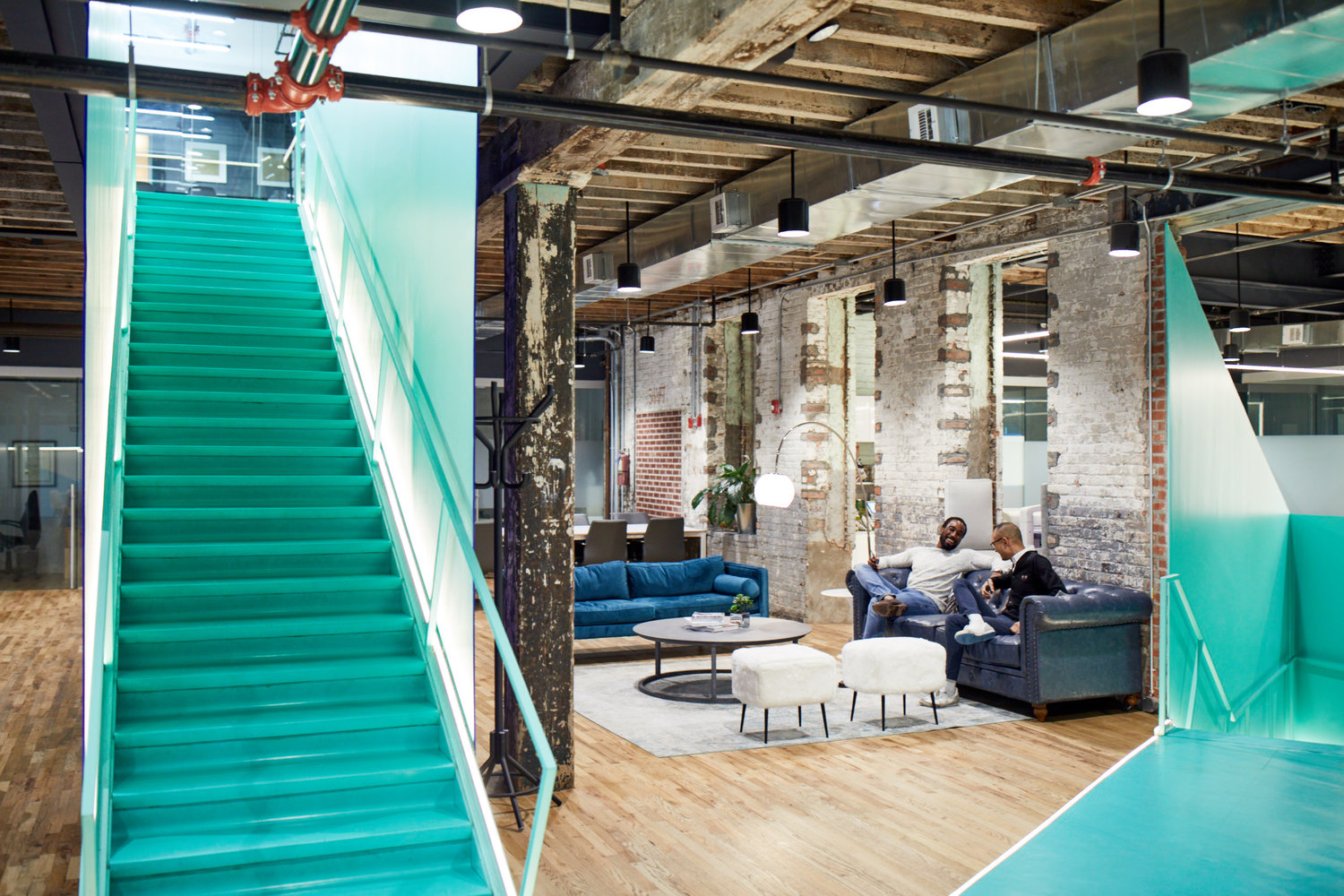By Bond Collective Staff
Ask 10 people what makes an office design great and you’ll get 10 different answers. Yes, an office must have a floor, a ceiling, and four walls (though the number four is debatable as well). But after that, there’s really no limit to how you decorate the space.
That said, some office designs are better than others. And not just better in terms of aesthetics, but better in terms of having a profound influence on your team’s creativity and productivity.
So how can you design an office your whole team will love? The workspace experts at Bond Collective give you 10 office design ideas to make every room — large or small — the best it can be.
Using Office Design To Create The Right Atmosphere
Creating the right atmosphere is an important part of office design. A well-designed office and the tone it communicates can impact your team’s efficiency, productivity, morale, and overall attitude. That same well-designed office also communicates volumes about the business to your clients and customers.
A pleasing, organized, modern office interior design promotes confidence and speaks of success to those who experience it. That said, it’s important to understand that what works for one business may not work for another. It all depends on the tone, image, and overall brand you’re trying to create.
Do you want to convey sophistication and professionalism? Go with dark, rich colors paired with straight, clean lines. Do you want to convey a more fun and creative vibe? Choose bright, flashy colors combined with busy prints and curvy lines.
Which style is right for your business? Only you can answer that question. Your choice, though, will then influence how you layout, decorate, and furnish your workspace.
Preparation And Planning Are Key
Before deciding on the office design you like, or the “trendy” new look your friend’s business chose, invest some time in preparing and planning.
Identifying what works for your business — which may be different from what other businesses are doing — will reap dividends in intangibles like productivity, engagement, focus, and improved team dynamic.
Here’s how to discover the office design that is perfect for a group of two or 200.
1) Observe Your Team’s Dynamic
The best way to find the office design and layout that works for your business is to observe your team’s dynamic.
Ask yourself the following questions:
-
How does the team use their current space?
-
Where are the bottlenecks in traffic flow?
-
What are the obstacles in collaboration?
-
What works in the current office design?
-
What doesn’t work?
-
What complaints about workspace does the team make on a regular basis?
As to this last question, don’t be afraid to ask your team directly what they want in an office space. They’re the ones using it every day and will likely have some good suggestions on how to improve the design.
2) Design With Company Culture In Mind
Your business has its own unique company culture that differs from the company culture of every other business. An effective office design will recognize and celebrate these distinctive differences in a manner that is all your own.
These defining characteristics give your business personality and help attract — and retain — clients, vendors, partners, and top talent. An office design that reinforces your company culture can even amplify team spirit within your business.
To identify your company culture, sit down with your team and define — in words and images — the personality you want your business to convey. Then design your office space accordingly.
3) One Size Does Not Fit All
Every business is different. In fact, every team within a business is different. They each function in their own unique way. That means that a one-size-fits-all approach to office design doesn’t work in most cases.
For example, some teams work better when they have several hours of quiet time each day. Cubicles or semi-private workspaces might serve you well in this instance.
Other teams, however, need to be in constant contact in order to answer questions, come up with solutions, and access a collective knowledge base. Isolating these individuals — even with something as basic as a cubicle — would interrupt that dynamic.
So what works for one business or one team won’t work for another. You have to identify the variables that affect your team the most.
4) Reimagine Space Allocation
Past office design paradigms allocated space based on title. The president and vice-president of the company had the biggest offices. Senior sales staff had smaller offices, managers yet smaller offices.
And so on down the ranks of employees it went to the newest members of the team, who may only have six to eight square feet of workspace.
In recent years, though, the tide is turning. Businesses are realizing that it’s more effective to allocate space based on the time a person spends in the office, not their title.
In fact, upper management may spend more time out of the office than in, so their workspace is wasted the majority of the day.
On the other end of the spectrum, an engineer often spends 80, 90, or even 100 percent of the day in the office working on various projects. They need a larger workspace than the salespeople who are out in meetings 75 percent of the time.
5) Rethink Essential Technologies
The office design that is right for your business will depend in large part on the essential technologies that your team uses on a regular basis.
For example, wired technology restricts employee movement and keeps them in one place for most of the day. Wireless technology, on the other hand, allows employees to move from one place to another without restrictions.
Though the debate between wired and wireless is one of the largest issues you’ll face, other technologies will have a significant impact on your business as well. It’s vital to identify the essential technologies that influence your team.
In the process, don’t be afraid to rethink how your business might use necessary tools in the future. When you plan for such a change, you make designing the perfect workspace easier and more straightforward.
6) Put Collaboration High On The List
When planning your new office design, put collaboration high on the list of “must-have” elements. Collaboration is the new model in business — and for good reason: it works.
Many small businesses and entrepreneurs get their start in a large, open room where everyone can talk to everyone else. As those businesses and startups grow, they often move into more traditional offices with walls and doors and dividers.
In the process, they lose the original “buzz” that made their success possible. But you can keep the buzz alive in your business by encouraging collaboration through your office design.
We’ll discuss some easy ways to do that in the 10 Tips For An Inspiring Office Design section below.
7) Base Your Office Design On Activities
As you observe your team, make note of the main activities they perform each day.
For example, they may check email and voicemail first thing when they arrive (often called “touching down”). From there, they move to a full team meeting. After that, they may break off into smaller groups to work on a project and, eventually, work solo for a while before taking a lunch break.
Use these main activities — touching down, team meeting, small group activity, and solo work — to design the office space that satisfies the unique needs of your team.
As you’ll see in the next section, there are plenty of ways to make even the smallest work area more flexible so that your team can tailor the space to their current activities.
10 Tips For An Inspiring Office Design
1) Offer A Variety Of Seat And Desk Options
When considering your office design, plan for a variety of seat and desk options. Ergonomic chairs, stools, couches, adjustable-height desks, cafe tables, and communal tables (just to name a few) are all excellent options to include in your workspace.
These options may not seem like a crucial consideration, but they are. Especially now that medical professionals recognize the negative health impacts of sitting for long periods of time every day.
Give your team the choice to work in a variety of different positions and they’ll be happier, healthier, more creative, and more productive.
2) Hide The Wire Clutter
Modern workers rely on electronic devices to get their work done. The cords that power and charge those tablets, printers, copiers, laptops, monitors, and phones can seriously clutter workspaces and hinder productivity.
Going wireless is one excellent solution. But for those devices that haven’t cut the cord yet, find ways to keep that snarl organized and out of the way. If at all possible, conceal the cords in the wall, in the floor, or along the backs of furniture.
3) Choose Natural Light
Gone are the days of row upon row of white fluorescent lights. We now know that the human body responds better to natural light. That natural light improves your team members’ moods and helps them stay focused and productive for longer periods of time.
While it’s likely impossible to put a window in every office, you can furnish your workspaces with lights that give off softer wavelengths. Harness the power of natural light by taking advantage of the lighting options available in today’s marketplace.
New technologies allow for office lighting to change automatically from the cooler greens and blues that occur in the morning to the warmer yellows and reds that occur in the afternoon. This allows you to vary the color temperature of your office lights to mimic what happens outdoors.
4) Take Down The Walls
When choosing your office design architecture, stay away from solid floor-to-ceiling walls, or even half-wall cubicles, whenever possible. Instead, opt for glass partitions — or no partitions at all. This open-concept office design promotes a collaborative and engaged workforce.
If you need to carve out a more private space, consider installing frosted glass brick or some other opaque material. Options like these allow for plenty of natural, ambient light while still giving you the privacy you need.
5) Bring The Outside In
Natural accents like plants, exposed concrete and wood floors, reclaimed wood desktops, and painted steel are simple ways to bring the outside in. These touches have the added benefit of making team members feel more comfortable. And when they’re more comfortable, they’re more focused, creative, and engaged.
6) Inspire Your Team With Color
Drab colors do nothing to encourage creativity and hard work. That’s why modern office designs incorporate vivid colors into the walls, floors, ceilings, and furnishings.
Whether you’re organizing different areas according to a certain color scheme or simply scattering pops of color around the office, studies have shown that varied bright hues can boost productivity, creativity, and overall happiness.
7) Set Up Multipurpose Workspaces
The large tables found in old libraries were often used as flexible workspaces. They allowed for a variety of work — from writing to research to drawing — to be done alone or in groups as the need arose.
You can incorporate that same multipurpose workspace concept into your modern office design to promote solo and collaborative work of all different kinds.
No longer do you have to dedicate space to a specific task. Now, you can design your office’s workspaces for a multitude of purposes — from quick team pow-wows to studious research tasks.
8) Decorate With A Variety Of Materials And Textures
Material and texture can have a significant influence on the quality of your team’s work. Few people want to stare at smooth, bland plastics all day.
That’s why office designers are gravitating toward the use of a variety of materials — from rough wood to soft fabrics to textured plaster and more — throughout the workspace. These textures stimulate a sense of productivity and wellness in the people who experience them every day.
9) Promote Collaboration With Mobile Furniture
Collaboration is vital to the success of your business, meaning that collaborative work areas are more necessary than ever before. Meeting together and then breaking into smaller groups keeps the inspiration flowing. But finding a workspace for those smaller groups can quickly kill the creative vibe.
To make this process easier, set up your collaborative areas with furniture that you can easily move, roll away, nest, fold up, or break down completely. This gives your employees the ability to cluster together after a team meeting to keep the brainstorm session rolling.
10) Foster Community With A Lounge Area
While a small workstation is still an important part of your employees’ workday, wireless technology allows employees to take their work with them to different spaces. A designated lounge area provides a comfortable, relaxed atmosphere where employees can build community, collaborate, and unwind while continuing to work on the project at hand.
It’s also beneficial to position the lounge area near — or as a part of — the main entrance of your office where the reception desk is located. When a visitor (be it a client or a prospective employee) walks in and sees all the activity, they’ll immediately get a sense of what your business is about.
The Ideal Office Space
At Bond Collective, we know how to design an office your whole team will love. Every one of our shared office spaces incorporates all 10 of the tips on this list (plus countless other design factors).
If you’re looking for a workspace that will increase your team’s productivity, consider becoming a member of Bond Collective. Take advantage of our coworking spaces, dedicated desks, and private offices to suit all your business needs. When you work at Bond Collective, you’ll be surrounded by extraordinary design that will take your teamwork to the next level.
Visit any one of Bond Collective’s many locations in the United States, including workspaces in New York, Pennsylvania, Washington D.C., Illinois, Tennessee, and Texas. Or call us today to find out more about everything we have to offer.
To learn more about the advantages of coworking spaces for digital nomads, remote workers, and businesses of all kinds, visit BondCollective.com today.
